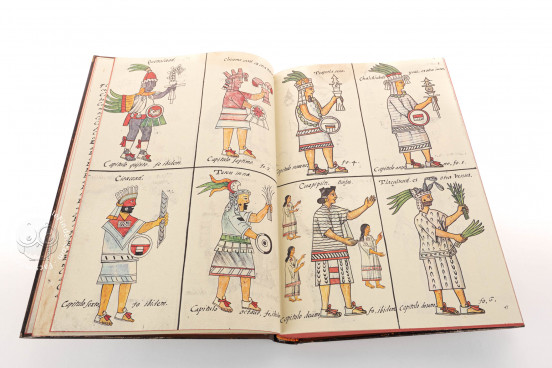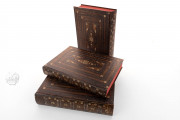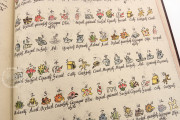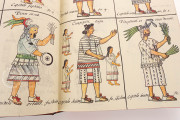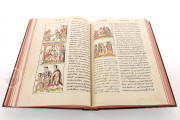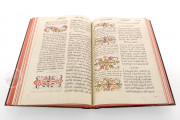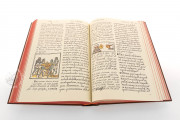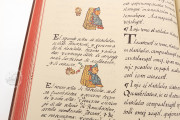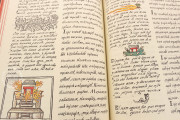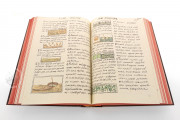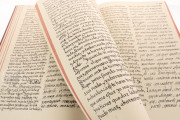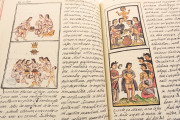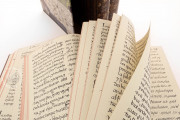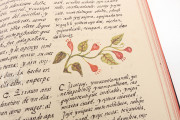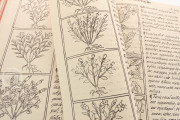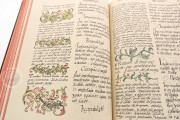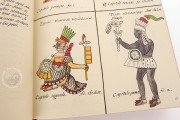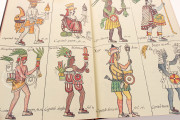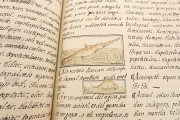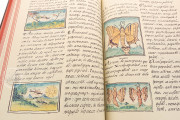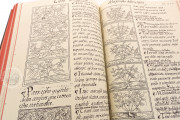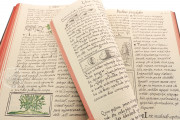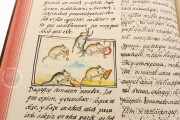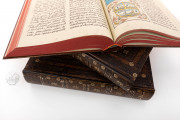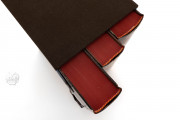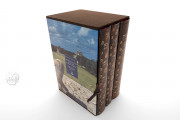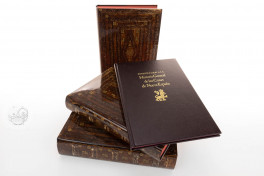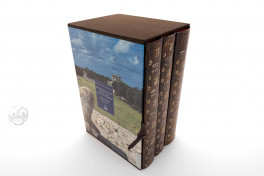The so-called Florentine Codex is a three-volume manuscript copy of the Historia General de las Cosas de Nueva España of Bernardino de Sahagún made in Mexico City and completed in 1577. The text in Spanish and Nahuatl, compiled over the course of decades, treats the peoples and cultures of central Mexico in encyclopedic scope. Its 1,845 illustrations elucidate that text through carefully rendered depictions of indigenous dress and customs.
The manuscript's subjects include mythology, religion, divination, philosophy, astronomy, history, manners and customs, natural history, songs and prayers, and the Spanish conquest of the area. Sahagún (1499-1590) is considered the father of modern ethnography, having worked extensively with indigenous peoples to record their life experiences and insights into traditional culture.
Nahua Scribes Trained by Franciscans
Most of the scribes of the Florentine codex, who numbered at least five, were trained by Sahagún and his Franciscan brethren or by locals trained by the Franciscans. The indigenous scribes were bilingual and had advanced linguistic skills. The text is in two columns, with the original Nahuatl in the right column of each page and the Spanish translation or paraphrase in the left column.
Illustrations in Service of and Independent from the Texts
Most of the illustrations in the Florentine Codex are column miniatures, and most appear in the left column, also occupied by the Spanish-language text. The section devoted to natural history (vol. 3, fols. 152-404)—or "earthy things," as Sahagún expressed it—is the most extensively illustrated portion of the text: most of the animals, birds, fish, trees, herbs, flowers, metals, and stones are pictured near the descriptions of their appearance and properties. These illustrations work in close consort with the text.
Six pages of portraits of deities (vol. 1, fols. 10-12) serve as a grand multi-page frontispiece to the section of the text devoted to Aztec deities. Other figural illustrations have a less direct relationship to the proximate texts, and the manuscript includes hundreds of purely decorative painted elements.
One Approach, Variation in Result
The many indigenous artists involved in creating the manuscript's paintings created images in contemporary European style, with value placed on the modeling of figures and the illusion of three-dimensional space. The approach to creating those images, however, was based on the traditional Mesoamerican process of first working in black before adding color. Furthermore, glyphs inherited from the pictographic tradition are included in some images.
All of the illustrations, whether large or small, framed or unframed, started as black line-and-wash drawings. Many then received washes of color, but many did not, and the result is a great variety in the appearance of the images as they have come down to history.
A Lifetime's Work
Sahagún's Historia General is the final comprehensive presentation of his knowledge of native culture accumulated over the course of most of his long life. He began his study of the subject upon his arrival in New Spain in 1529, and portions of the text had already been circulated before 1568, when the Historia project began in earnest.
Compendium for a European Reader
The production of the Florentine Codex was supported by Rodrigo de Sequera, the Franciscan Order's Commissary General of the Provinces of New Spain. He took the completed manuscript to Spain in 1580, and it may have been in the possession of the Medici family of Florence by 1588, whence it came into the Medicei Palatini library, which opened to the public in 1765. After passing into the Biblioteca Magliabechiana in 1771, the volumes of the Florentine Codex were transferred to the Biblioteca Medicea Laurenziana in 1783.
We have 2 facsimiles of the manuscript "Florentine Codex":
- Historia General de las Cosas de Nueva España facsimile edition published by Club Internacional del Libro, 1994
- Bernardino da Sahagún: Historia Universal de las cosas de Nueva España facsimile edition published by Giunti Editore, 1996

